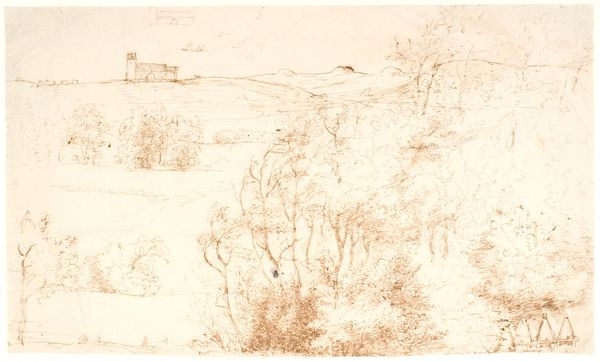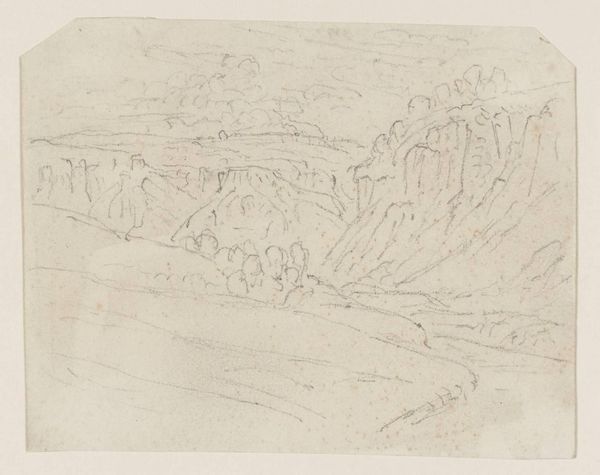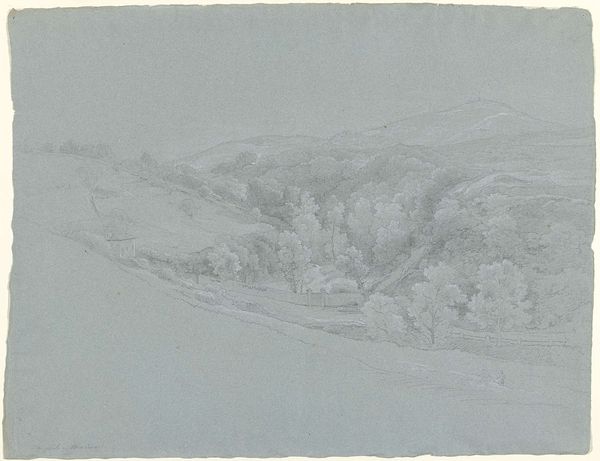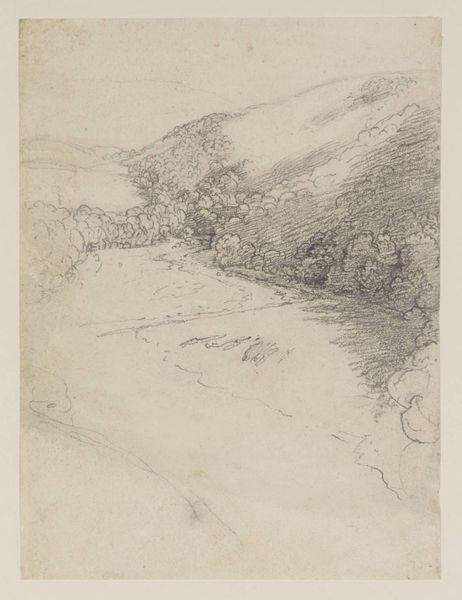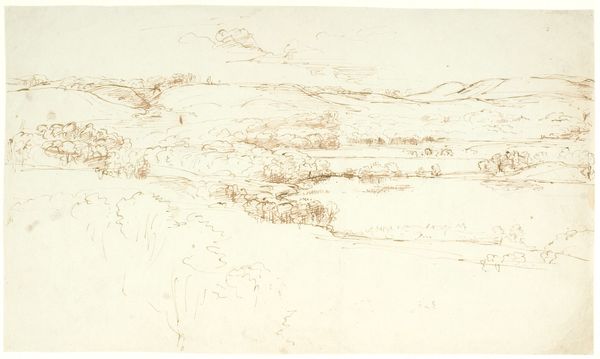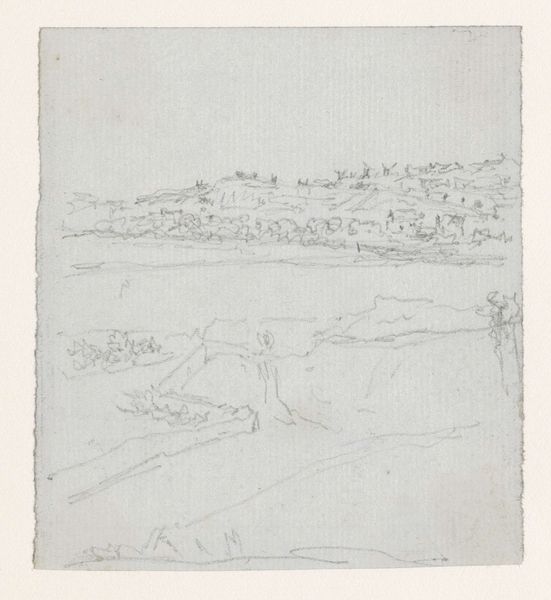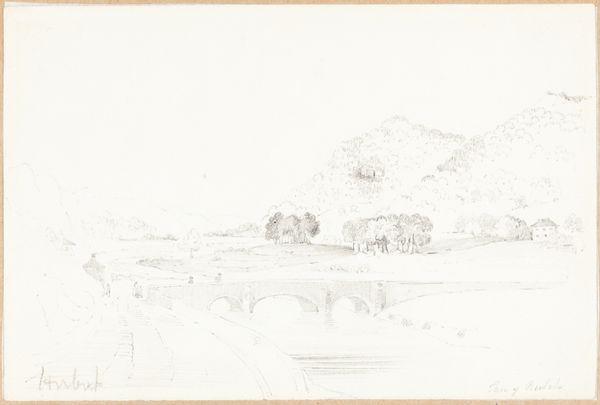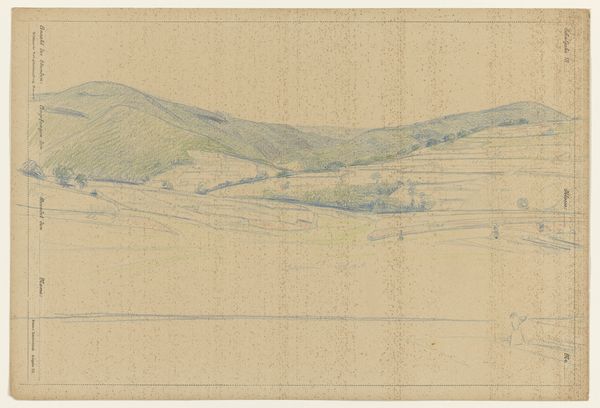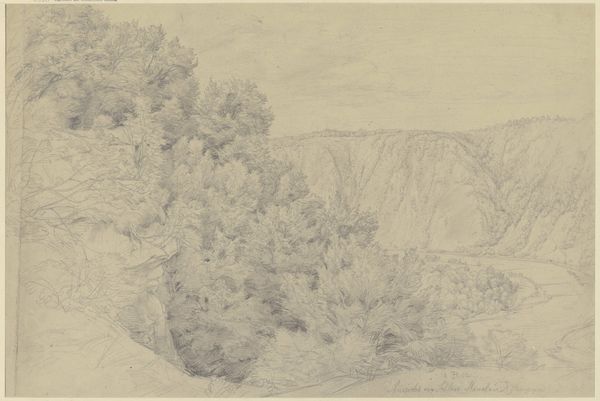
drawing, pen
#
drawing
#
impressionism
#
landscape
#
france
#
line
#
pen
#
academic-art
#
realism
Dimensions: 18.3 x 11.7 cm
Copyright: Public domain
Curator: What a meticulously crafted landscape! Tissot's "Valley of Jehoshaphat," dating back to 1889 and held at the Brooklyn Museum, presents such a rich interplay of line and form through a relatively simple medium of pen and ink. Editor: My immediate impression is one of quiet observation. It’s an unassuming drawing, seemingly modest in its scale and tonality, yet the textures almost feel palpable. I want to know what papers, which pens, and who saw this! Curator: Considering Tissot's background in academic art, the sheer amount of detail captured through simple linework reveals a dedication to capturing the observed world with incredible precision. Think of the material availability for art creation. Remember, even something like ink required manufacturing processes that relied heavily on natural resources and labor! Editor: Yes, and think of how the valley itself serves as a profound historical and religious site, steeped in narrative importance, linked to Christian and Jewish traditions. How does its depiction here, for a primarily western art audience, inform and perhaps subtly direct their understanding? Tissot wasn't just rendering scenery. Curator: Precisely. Looking closer at the distribution of tone across the page, we can observe a controlled process. The light and shadow are achieved through careful layering, implying that his production was carefully and slowly crafted and constructed. The artist’s labor is implicit. Editor: And, if we situate it within the broader context of landscape art’s function within 19th-century orientalism, it’s tempting to read it through that socio-political lens too. Was this drawing destined for the market, destined to shape or confirm preconceptions? It demands close questioning of its visual narrative. Curator: Definitely. There's also that implied value. As a pen and ink work on paper, it could be construed by some as “lesser”, as "craft", against other mediums deemed ‘fine art.’ But is it “lesser”? The artist's work makes it fine. Editor: Ultimately, "Valley of Jehoshaphat," prompts us to examine the role of art in transmitting specific understandings of place and faith, particularly in the context of cultural exchange and reception. Curator: Absolutely, its power resides not just in its skilled creation, but in its ability to provoke these reflections on value, labor, material, and artistic processes!
Comments
No comments
Be the first to comment and join the conversation on the ultimate creative platform.
